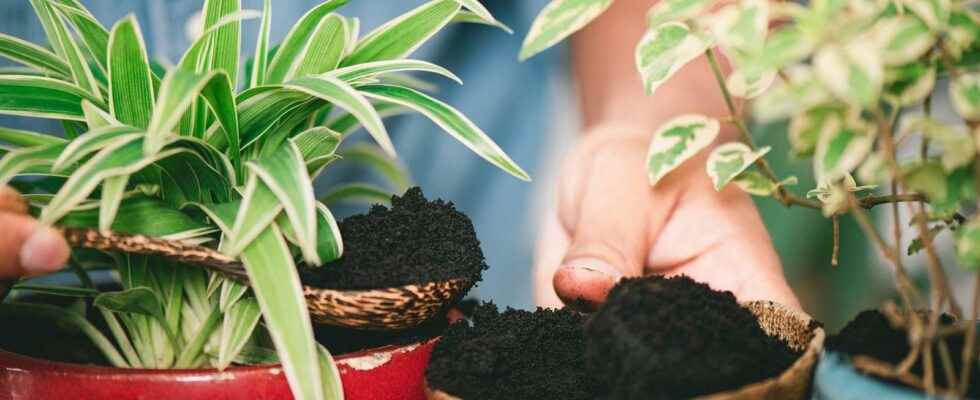This material is known to have many ideal properties for treating plants, scaring away predators and enriching the soil. Collect the coffee grounds in the filters or capsules and let them dry. You can keep this material in a box to use it whenever needed in the garden.
You will also be interested
[EN VIDÉO] Coffee, a true ally for health Coffee is the most consumed drink in the world after water. 2.3 million cups are drunk per minute! In addition to its taste and friendliness, coffee is renowned for its health benefits. It has been the subject of countless scientific studies. Here’s what we can learn from it.
Don’t throw away the coffee grounds, collect it and use its benefits in the garden. You do not suspect all its qualities!
What does coffee grounds do?
Coffee grounds contain nutrients likenitrogenfrom phosphorusfrom magnesium or potassiumwhich once absorbed by plants, help them grow and promote blooms. Magnesium and potassium will be immediately assimilated by plants. Once cooled, remember to recover it from coffee maker filters or capsules and dry it well in theair free. It could mold if the drying time is not sufficient. The best conservation is in a box, at the fridge.
How and where to install it?
The coffee grounds, once collected, can have different destinations, of which here are some examples:
- it can replace a natural fertilizer. Put it, wet or dry, directly in the garden at the foot of plants or shrubs such as roses and scratch it on the ground so that it becomes impregnated;
- it is known to fight against small pests such as snails, aphids, ants or slugs. Against the gastropods, create barriers by placing coffee grounds around the attacked plants. He will prevent them from advancing with his texture grainy and sound smell is not much appreciated. Remember to put dry coffee grounds after each passage of a rain because the barrier effect will no longer be effective. Against the aphidsmix a little coffee grounds in a sprayer filled with water and apply the preparation to the foliage of infested plants;
- its smell will drive away the cats that come to scratch the mulch, the flower beds and the rows of vegetables in the vegetable patch. Place coffee grounds directly on the ground in places where you play or pass by and add some citrus peelings;
- recycle the coffee grounds in the composter (you can also put the coffee filter in if the paper is unbleached, so biodegradable). Rich in nitrogen, it will be part of the important organic and mineral materials for making a compost of quality in order to naturally enrich the soil of the garden and the vegetable patch. Worms love it! Space the contributions because top of coffee grounds will bring acidity in the compost;
- also think about vermicomposter. The principle will be the same as in a composter;
- when sowing, mix horticultural soil (3/4) with dry coffee grounds stored for several months (1/4) to limit the presence ofacid chlorogenic. You will have a naturally enriched soil, ideal for seeing the seeds germinate and develop quickly. Be careful not to use too much fresh coffee grounds when sowing because it can, in high doses, become a growth inhibitor, that is to say prevent the germination of seeds. It’s all in the dosage fresh or decomposed marc;
- substitute it sand coffee grounds to sow small seeds that may stick together. The dry coffee grounds will help distribute the seeds evenly. To be done, in particular, with the seeds of carrots because the coffee grounds are a repellent to the attacks of the carrot fly;
- acidify the soil at the foot of heathland plants such as hydrangeas, heathers or rhododendrons. Coffee grounds will tend to amplify the blue tint of some hydrangea varieties;
- sprinkle coffee grounds on your lawn which will regain strength with this nourishing supplement. Water immediately so that the components infiltrate directly in depth;
- water your indoor plants, green or flowering with a fertilizer made from coffee grounds. Mix the contents of one filter with two liters of rainwater at room temperature. Stir regularly and leave to infuse for two days. Filter everything and water your indoor plants to bring them this 100% homemade organic fertilizer.
Interested in what you just read?
